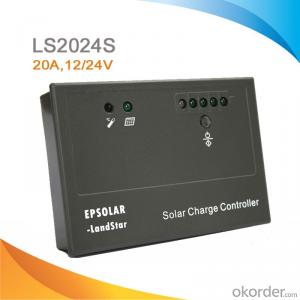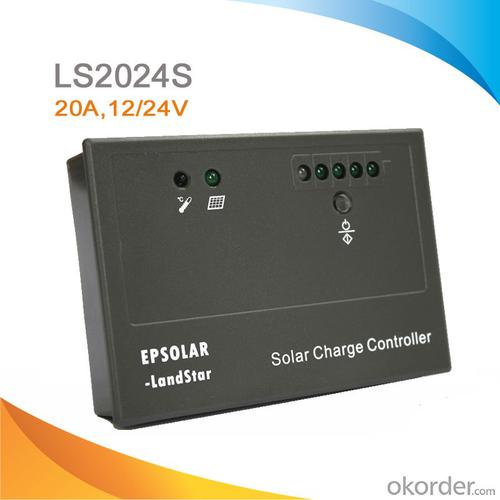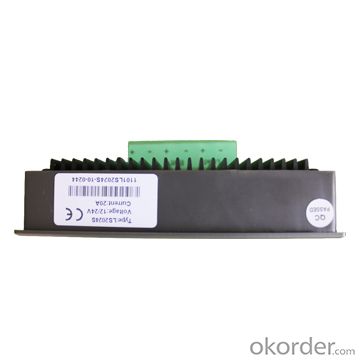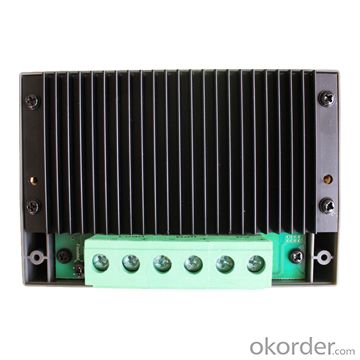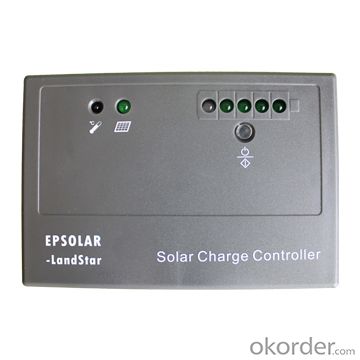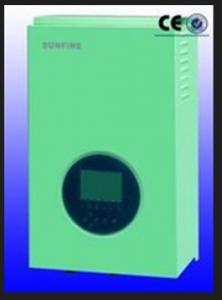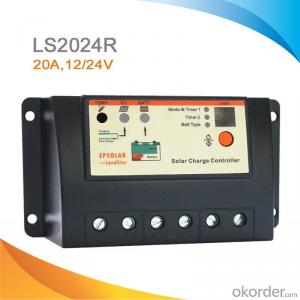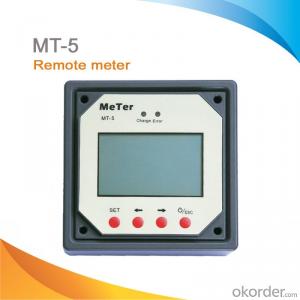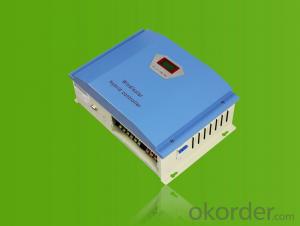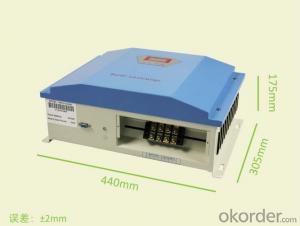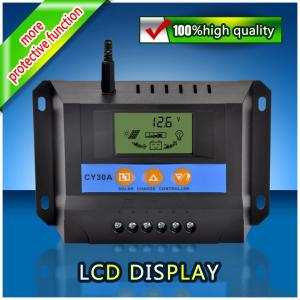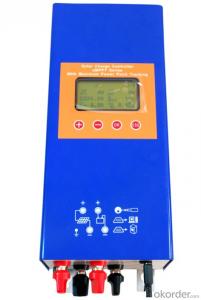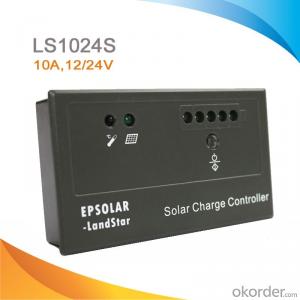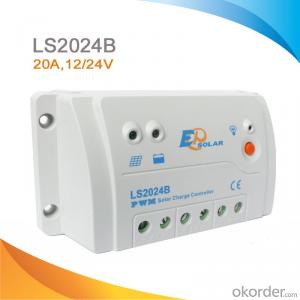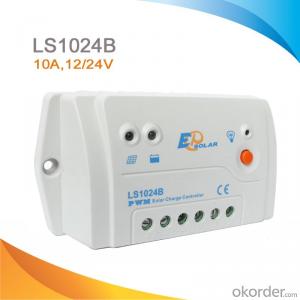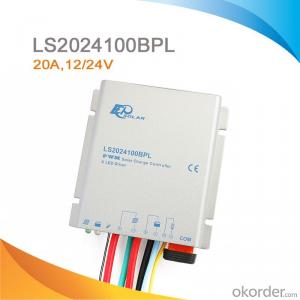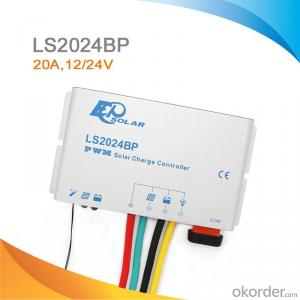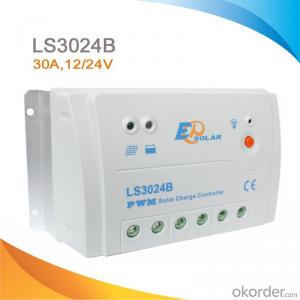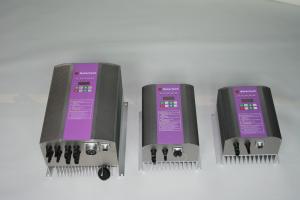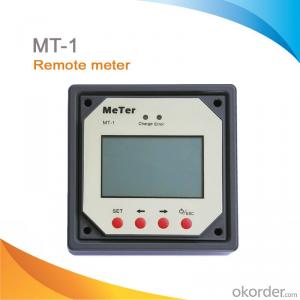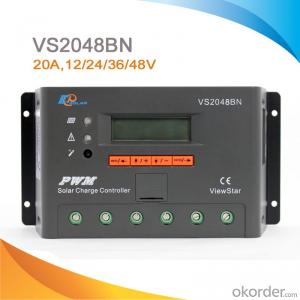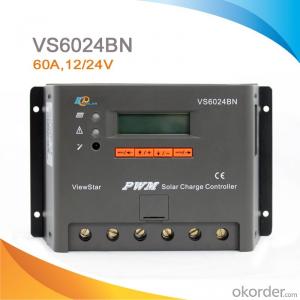Solar and Wind Charge Controllers:Surface Mounting PWM Solar Panel Charge Regulator/Controller, 20A, 12V/24V, LS2024S
- Loading Port:
- China main port
- Payment Terms:
- TT or LC
- Min Order Qty:
- -
- Supply Capability:
- -
OKorder Service Pledge
OKorder Financial Service
You Might Also Like
Features:
·High efficient Series PWM charging
·Use MOSFET as electronic switch
·Gel, Sealed and Flooded battery type option
·Temperature compensation
·LED indicators indicate battery voltage state
Electronic Protections:
·over charging
·over discharging
·overload
·short circuit
·Reverse protection for battery
Specification:
Electrical parameters | LS1024S | LS2024S |
Nominal System Voltage | 12 / 24VDC auto work | |
Rated Battery Current | 10A | 20A |
Max. Battery Voltage | 32V | |
Charge Circuit Voltage Drop | ≤0.26V | |
Discharge Circuit Voltage Drop | ≤0.15V | |
Self-consumption | ≤6mA | |
Overall dimension | 120 x 68 x 40mm | 128 x 87x 48mm |
Terminal | 4mm2 | 10mm2 |
Net weight | 0.15kg | 0.25kg |
Working temperature | -35℃ to +55℃ | |
Humidity | 10%-90% NC | |
Enclosure | IP30 | |
Battery Voltage Parameters (temperature at 25℃) | |||
Battery charging setting | Gel | Sealed | Flooded |
Equalize Charging Voltage | —— | 14.6V;x2/24V | 14.8V;x2/24V |
Boost Charging Voltage | 14.2V;x2/24V | 14.4V;x2/24V | 14.6V;x2/24V |
Float Charging Voltage | 13.8V;x2/24V | 13.8V;x2/24V | 13.8V;x2/24V |
Low Voltage Reconnect Voltage | 12.6V;x2/24V | 12.6V;x2/24V | 12.6V;x2/24V |
Low Voltage Disconnect Voltage | 11.1V;x2/24V | 11.1V;x2/24V | 11.1V;x2/24V |
Equalize Duration | —— | 2 hours | 2 hours |
Boost Duration | 2 hours | 2 hours | 2 hours |
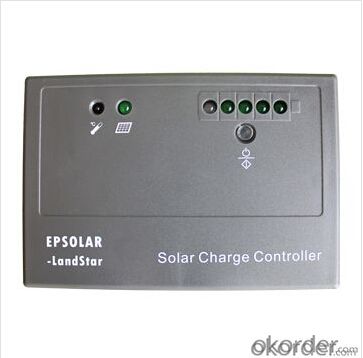
FAQ:
Q1. What is the voltage?
A1. Our 45/60A solar charge controller is 12/24/36/48V auto work.
Q2. What is the difference between MPPT&PWM?
A2. MPPT has higher efficiency, it can track the max power point and won't waste energy.
Q3. What is the efficiency of the MPPT controller?
A3. MPPT>99%, peak conversion efficiency>98%.
Q4. What is the waranty of product?
A4. 12 months.
Q5. What protection does your MPPT controller have?
A5. PV array short circuit, PV reverse polarity, Battery reverse polarity, Over charging, Output short circuit.
- Q: Can a solar controller be used in extreme weather conditions?
- Yes, a solar controller can be used in extreme weather conditions. Solar controllers are designed to withstand a wide range of weather conditions, including extreme heat, cold, humidity, and even heavy rain or snow. They are built with durable materials and often have protective features to ensure their functionality and reliability in harsh environments.
- Q: Can a solar controller be used in a standalone solar power system?
- Yes, a solar controller can be used in a standalone solar power system. A solar controller regulates the voltage and current from the solar panels to the batteries, ensuring optimal charging and preventing overcharging. In a standalone solar power system, where there is no connection to the grid, a solar controller is essential to manage the flow of energy and protect the batteries.
- Q: Can a solar controller be used with solar-powered indoor communication systems?
- Yes, a solar controller can be used with solar-powered indoor communication systems. A solar controller is a device that regulates the power flow from the solar panels to the batteries, ensuring efficient charging and preventing overcharging. Even though indoor communication systems do not directly rely on solar power, they can still benefit from using solar panels to generate electricity and reduce their reliance on the grid. By integrating a solar controller into the system, it can effectively manage the power generated by the solar panels, ensuring optimal performance and longevity of the batteries. This setup allows for continuous operation of the indoor communication systems, even during power outages or in remote locations where grid power may not be available.
- Q: How do I protect a solar controller from lightning strikes?
- To protect a solar controller from lightning strikes, it is recommended to use surge protectors or lightning arresters specifically designed for solar power systems. These devices help divert excessive voltage caused by lightning strikes away from the controller, preventing damage to the equipment. Additionally, grounding the solar system properly and ensuring all electrical connections are secure can further protect the controller from lightning-induced power surges.
- Q: How do I ensure compliance with local regulations when installing a solar controller?
- To ensure compliance with local regulations when installing a solar controller, it is important to familiarize yourself with the specific regulations in your area. This can be done by researching local codes, permits, and requirements related to solar installations. It is advisable to consult with local authorities or regulatory bodies to ensure that you are meeting all the necessary guidelines. Additionally, hiring a licensed and certified professional for the installation can help ensure compliance with local regulations and standards.
- Q: What is the role of a solar controller in preventing damage to the solar panels from electrical faults?
- The role of a solar controller in preventing damage to the solar panels from electrical faults is crucial. A solar controller, also known as a charge controller or regulator, is responsible for regulating and controlling the flow of electricity from the solar panels to the batteries or electrical loads. One of the main functions of a solar controller is to protect the solar panels from overcharging. When the batteries are fully charged, excess energy from the solar panels can cause overcharging, which can damage the batteries and reduce their lifespan. The solar controller monitors the battery voltage and prevents overcharging by diverting the excess energy away from the batteries. Additionally, a solar controller plays a vital role in preventing damage to the solar panels from electrical faults such as short circuits or reverse current. In the event of a short circuit or reverse current, the solar controller detects these faults and immediately interrupts the flow of electricity from the solar panels. By interrupting the electrical connection, the solar controller prevents further damage to the panels and ensures the safety of the entire solar power system. Furthermore, a solar controller also offers protection against over-discharging of batteries. Over-discharging can be harmful to the batteries and may lead to irreversible damage. The solar controller monitors the battery voltage and disconnects the loads when the battery voltage reaches a certain low level. This prevents over-discharging and extends the lifespan of the batteries. Overall, the role of a solar controller in preventing damage to the solar panels from electrical faults is to regulate and control the flow of electricity, protect against overcharging, detect and interrupt electrical faults, and prevent over-discharging of batteries. By performing these functions, the solar controller safeguards the solar panels, batteries, and the entire solar power system, ensuring its optimal performance and longevity.
- Q: Can a solar controller be used with solar-powered disaster response equipment?
- Yes, a solar controller can be used with solar-powered disaster response equipment. A solar controller is essential in regulating and optimizing the charging process of solar panels, ensuring that the equipment's batteries receive the right amount of power and preventing overcharging or damage. By using a solar controller, disaster response equipment can effectively harness solar energy and operate efficiently during critical situations.
- Q: What is the purpose of the load output on a solar controller?
- The load output on a solar controller serves the purpose of supplying power to a connected load, such as lights or small appliances, directly from the battery of the solar panel system. This feature allows for the utilization of solar energy when the sun is not shining or when the solar panel system cannot generate sufficient power to meet the load requirements. By directly connecting the load to the battery, the solar controller ensures a consistent and stable power supply to the load, thus maximizing the efficiency and reliability of the solar system. Moreover, the load output often incorporates various protection features, including overcurrent and overvoltage protection, to safeguard the connected load from potential damage. In summary, the load output on a solar controller enhances the functionality and versatility of a solar panel system by enabling the utilization of solar energy even in less favorable conditions for power generation.
- Q: How does a solar controller handle reverse current flow from batteries to solar panels?
- A solar controller, also known as a charge controller, is an essential component in solar power systems. Its primary function is to regulate the charge coming from solar panels to batteries, ensuring optimal charging and preventing overcharging or damage to the batteries. When it comes to reverse current flow from batteries to solar panels, a solar controller handles it by utilizing a blocking diode or a solid-state relay. These components are designed to prevent current flow in the opposite direction, thereby safeguarding the solar panels from any damage that could be caused by the battery's discharge. The blocking diode acts as a one-way valve for the electricity, allowing the current to flow from the solar panels to the batteries but blocking any reverse current. It is installed in the wiring between the batteries and solar panels, effectively preventing the battery's discharge from flowing back into the panels. Similarly, a solid-state relay can be used in more advanced solar controllers. These relays use electronic switching components to control the direction of current flow. In the case of reverse current, the solid-state relay will detect it and prevent it from reaching the solar panels. By incorporating either a blocking diode or a solid-state relay, a solar controller effectively mitigates the risk of reverse current flow from batteries to solar panels. This ensures the longevity and efficiency of the solar power system by maintaining the intended flow of energy and protecting the panels from potential damage.
- Q: Can a solar controller be used with both 12V and 24V batteries?
- Yes, a solar controller can be used with both 12V and 24V batteries. Most modern solar controllers are designed to be compatible with various battery voltage systems, allowing users to connect both 12V and 24V batteries to the controller without any issues. However, it is important to ensure that the controller is capable of handling the higher voltage if using a 24V battery system.
Send your message to us
Solar and Wind Charge Controllers:Surface Mounting PWM Solar Panel Charge Regulator/Controller, 20A, 12V/24V, LS2024S
- Loading Port:
- China main port
- Payment Terms:
- TT or LC
- Min Order Qty:
- -
- Supply Capability:
- -
OKorder Service Pledge
OKorder Financial Service
Similar products
Hot products
Hot Searches
Related keywords
